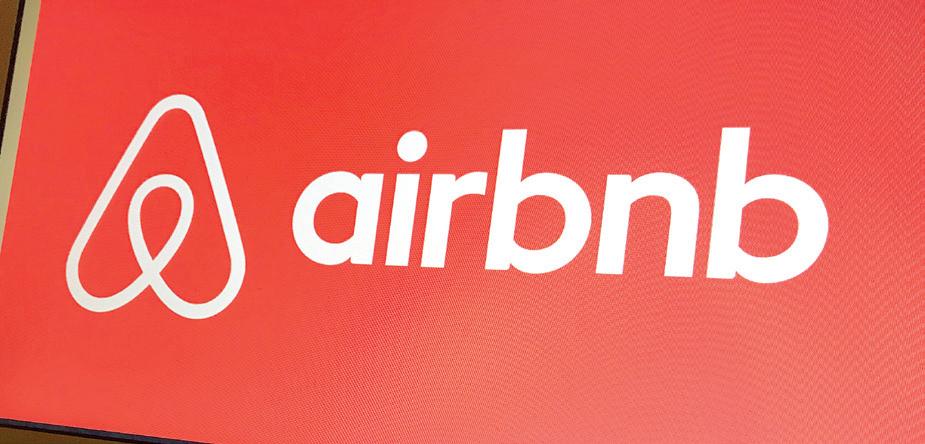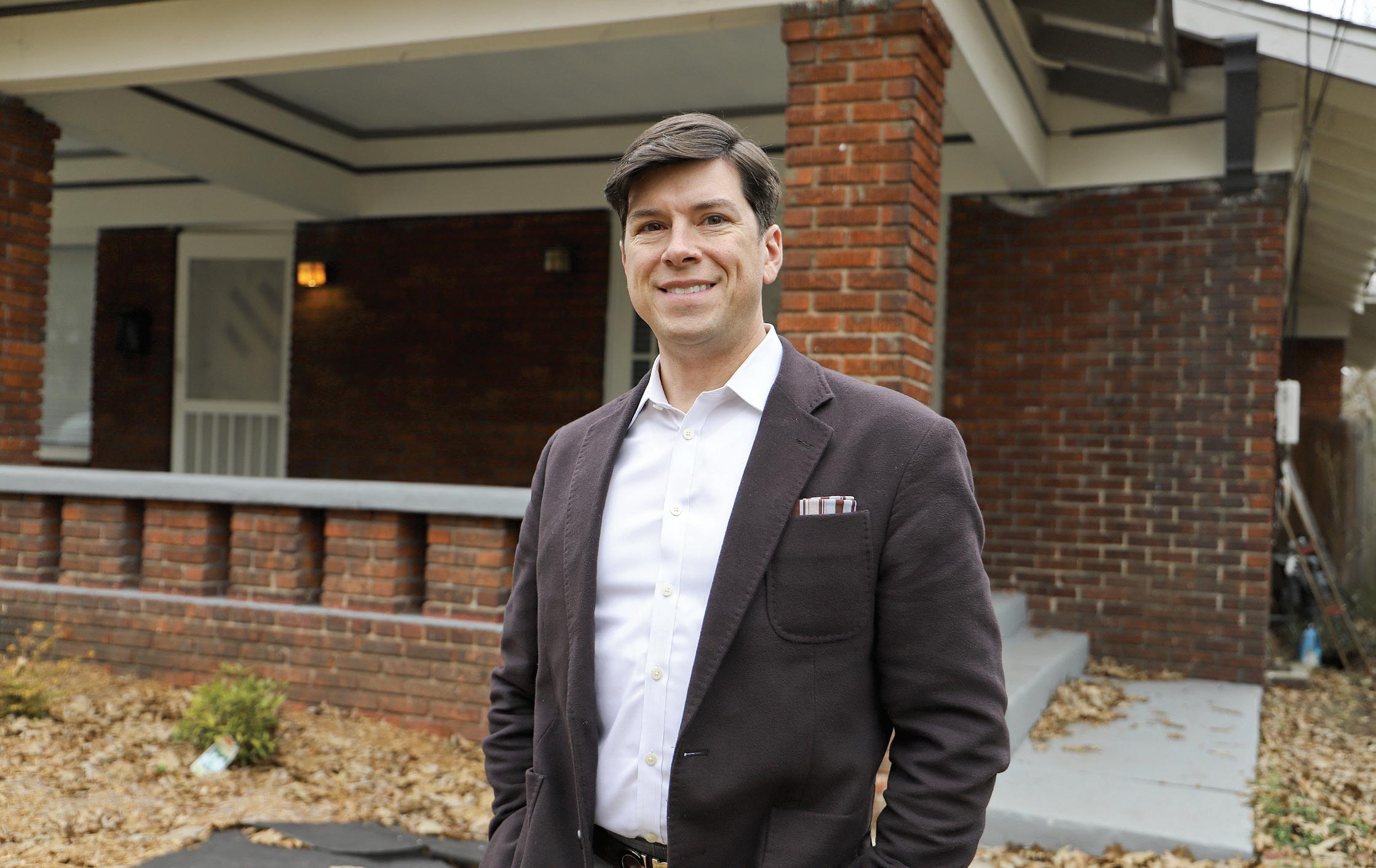
4 minute read
Home & Real Estate Up in the Air…bnb
Realtor Leslie Johnson uses short-term rentals to look for his next home
By Kathy Dean
Through his career in real estate, Leslie Johnson has had a close view of the resurgence happening in many Intown Atlanta neighborhoods. He decided to get a closer view when considering where to buy his next home.

For nearly 15 years, Johnson, Managing Broker in the Harry Norman Intown Office, lived in Midtown high-rises, and he was used to the full-service lifestyle and easy commute. “I lived at 7th and Peachtree Street and managed a real estate office at 10th and Peachtree, so I had a 2-block walk,” he said.
He didn’t want to fool with a car –and he didn’t need to. “Midtown is truly a walkable community. It was cheaper without a car, and I could walk to stores, restaurants, everything I needed,” Johnson said. “I sold my car and never got around to buying another one. I had an urban lifestyle and could manage very well between MARTA, car services and Zip cars.”
Then he took his current position with the Harry Norman Intown Office in Atlanta. Its location on Piedmont Avenue near Monroe Drive meant that purchasing a car was necessary. “I considered buying a house, too, but I realized it was going to be a big change in my lifestyle.”
Johnson sold his condo and put his furnishings in storage; he didn’t have a permanent place to stay, but he had a plan. He wanted to experience the Intown neighborhoods for himself and find the right place to set down roots. It meant doing more than just looking before he leaped.
“I decided that before I bought a house or condo, I wanted to try out the neighborhood,” Johnson said. “I wanted to know: Can I walk my dog at night here? Where do I get my groceries? Can I find a pharmacy that’s open at midnight?
“And I could experience the commute from home to work. Until you live and drive in an area, you don’t actually know what it will be like.”
Through Airbnb, he found short-term rentals on homes, apartments and rooms in neighborhoods around the Atlanta BeltLine. Johnson said he was able to experience the character of each neighborhood by interacting with people in the area.
“In some Airbnb’s, where someone rented out their apartment or duplex, I stayed alone,” he said. “Many times, though, people rented out a room or section of their home.”
In those cases, Johnson got to spend time with the owners. “That was especially helpful since I could talk to them and find out about the neighborhood, get suggestions on where to eat and shop, and find out the best way to travel in and out of the area.”
Like many urban areas, Atlanta is experiencing a return to its city center. In the last century, people were leaving the cities behind and now the trend is to come back to the city. “Atlanta is a city on the verge,” he said. “We see neighborhoods that had been all but forgotten coming back.”
According to Johnson, the resurgence of many Intown neighborhoods is largely due to the Atlanta BeltLine. The one-time railway corridor circles Atlanta’s core. It’s being developed as a multi-use trail that will connect the city’s neighborhoods.
“The BeltLine is completely changing everything. I think it’s a bigger deal for Atlanta than the Olympics were. The railroad built the city, and now it’s saving it by revitalizing the city’s urban core through the BeltLine project.”
Johnson said that the revitalization goes beyond Inman Park, Old Fourth Ward and Morningside. It reaches into neighborhoods like Peoplestown and Summerhill.
“Peoplestown is changing, but there’s a good infrastructure there,” he said. With its location close to Downtown and Midtown, the neighborhood shows a lot of potential, he added. It also offers an easy commute, with lots of ways in and out.
There are lush, hilly landscapes in Peoplestown, green with trees and affording spectacular views of Downtown. It’s a community that Johnson feels is a good fit for him, and he has considered purchasing a home there.
“When a house listing came up, I found an Airbnb right across the street and stayed there for a week,” he said. “I could see the property every day and experience life in the neighborhood.”
Summerhill has a similar location and views of the city, but it’s not quite as developed. “There aren’t a lot of shops in Summerhill yet, but you can see where they’ll fill in,” he said. “Downtown, Midtown and Grant Park are all close by, and it has a similar feel to Peoplestown.”
In Grant Park, Johnson felt a very eclectic vibe. The neighbors were friendly, and it seemed to him that everybody knows one another. “It’s easy to find cafés to eat at. It’s still very urban and felt a lot like Midtown, but lateral, with more singlefamily homes rather than high-rises,” he said.
He also had good experiences with Ormewood Park on the east side and Mozely Park on the west side. “Mozely Park reminded me of Jefferson Park in East Point, which is well-known for its friendly neighbors who visit and have dinner together,” he said. “Mozely Park is developing that same vibe.”
Johnson shared one caution. “When looking for a home in these traditionally underserved areas, it’s important to get professional help from a Realtor.”
For example, a grandparent may have built the home and passed it down through the family without a proper will or formal transfer of title. Very often, property deals were handled through handshakes and there is no deed to record the transaction. Claims against the property may have to be ironed out, in some cases.
“There are ways to resolve these issues,” he said, “but you need good representation, especially when buying in neighborhoods that had been underserved for so long.”
Johnson said that Airbnb has been a great way for him to try out the neighborhoods, and he recommends it. “If the neighborhood isn’t right for you, it’s okay. There’s one that will be a perfect fit. They all have character and good neighbors.”
Johnson made it clear that he has the greatest respect for the people who’ve been living in these Intown neighborhoods the whole time, the people who nurtured them and kept the area settled. “I believe that as these neighborhoods go through their redevelopment cycles, it can be done well,” he said, “The new homeowners just need to be respectful of the neighborhood’s character and history and build on it.”










